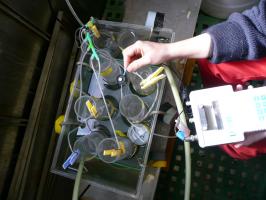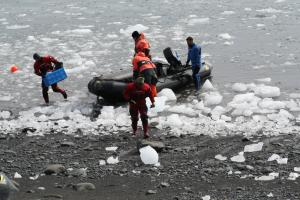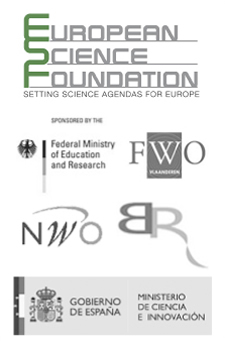My second visit to Jubany
This is my second visit to Jubany. I have already visited the Jubany station in January-February 2010 and that was an extraordinary experience. So I was really excited to find out that also this year our application was approved and that I could leave for another expedition to this wonderful place near Potter Cove on King Georges Island.
The plan was to run two more experiments on meiofauna and to sample for the macrofauna community structure and stable isotopes analysis. Most of this work is in the framework of Francescas Pasotti’s PhD. In 2010 I went together with her to Jubany, while she returned in 2011, whereas this year it was my turn again. This time Ulrike Braeckman is joining me, a young post doc from our lab at the University of Ghent. She has a lot of experimental experience and she speaks fluently Spanish, so an excellent companion for me on this expedition. We left as planned on the 14th of February from Palomar, the military airport at Buenos Aires, and we arrived already the next day in Jubany where we were welcomed by the chief of the station, Alejandro Berto, and many other enthusiastic Argentinian, Spanish and German scientists as well as other people working at the base. Until today I never came across somebody who did not like to stay in Jubany, and also now the atmosphere is again very friendly and relaxed. We were immediately introduced to the different people of the station who were going to assist us during the field work, in order to get the necessary samples which would allow us to do our work her in the optimal conditions.
It took us one and half days to install the labs. Especially to test the thermostatic baths was at some point a true challenge, but at the end we had two of them working perfectly at 2° C, which is about the temperature of the water at 15 m depth in the bay. On friday night we were ready to start the first experiments the next day. For that we needed assistance from the divers who had to collect 27 sediment cores from one point in the cove, which we called our experimental station since we started to work here in 2010. However, when we woke up on Saturday the weather seemed to have changed completely over night. A very strong storm was active over the bay and of course with this weather diving was out of the question. So it meant we could have one day of rest, since catching up with emails was also not an option because the internet was down too due to the bad weather. Finally we were able to get our samples on monday morning and we could start our first experiment. Since one of the main aims of the IMCOAST project is to understand the impact of climate change on the Antarctic coastal ecosystems, we want to get insight with our experiments what the main food source is for the meiofauna, and if they are flexible in their diet. The meiofauna represent the group of smallest but also the most numerous animals that live in the soft seafloor such as roundworms, but also many crustaceans. In this way we hope to understand better the consequences of possible changes in the primary producers, which serve as food for higher trophic levels such as the benthic organisms, for the whole marine ecosystem including the meiofauna.
 |
 |
On Tuesday the second group of samples were collected and now our experiments are incubating and we can only wait for the next moment of processing some of the samples. I also would like to take the opportunity here to acknowledge sincerely the hard work of especially the divers who work in the cold from early in the morning until late evening, providing high quality samples in these extreme conditions.

